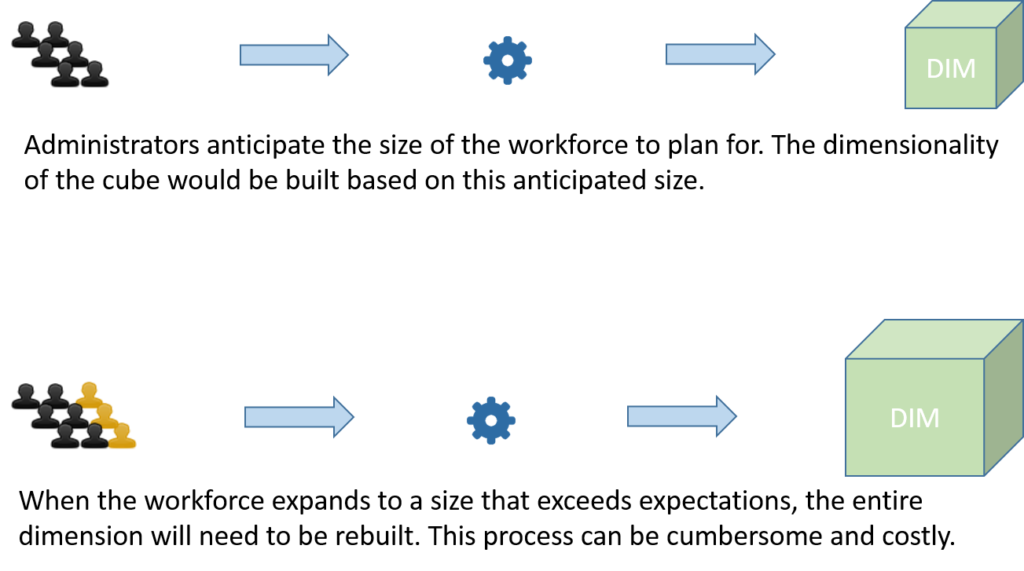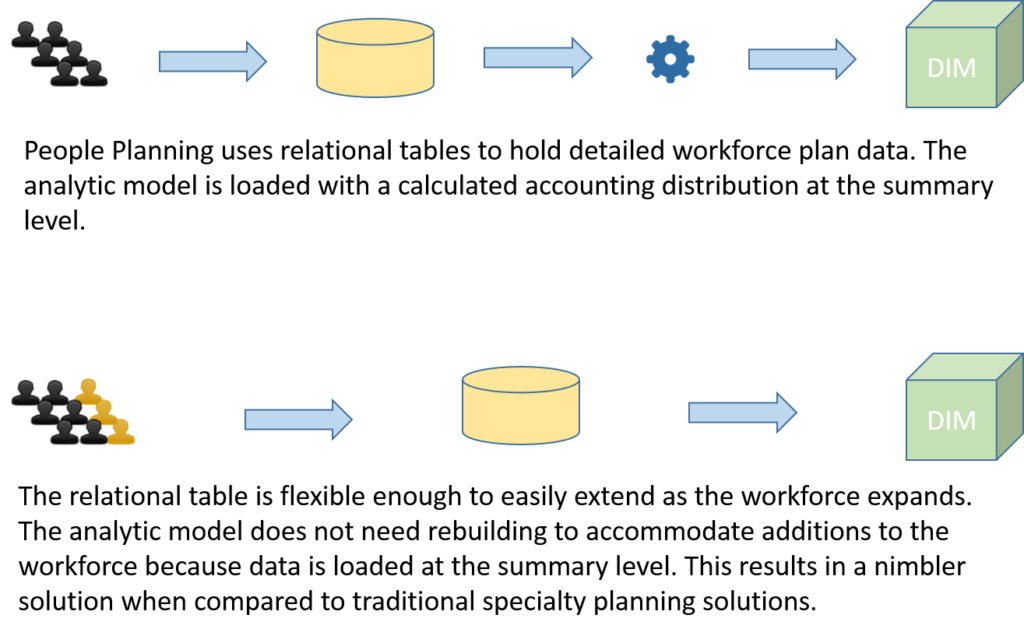OneStream XF People Planning is a pre-built specialty planning solution that can extend the value of your Corporate Performance Management platform for workforce planning. Specialty Planning solutions from OneStream use relational tables to capture details while only loading summary data to the analytical model. As a result, the end-user experience for updating and maintaining plan details becomes more flexible and simplified.
OneStream XF People Planning Benefits
- Easier to add new benefit plans, employees, travel and entertainment expenses.
- No need to update the cube with every new employee or metadata change.
- Combine compensation and bonus groups for flexibility.
- Create exceptions for unique plans.
- Inherent flexibility allows ease of use in handling compensation, benefits, and sales plan complexities.
- Driver-based workforce planning capabilities
Traditional Specialty Planning Approaches and Problems
Traditional specialty planning approaches use multi-dimensional analytic planning technologies. The nature of multi-dimensional analytic planning requires building a Cube and defining its Dimensions with the appropriate dimension members. When building a multi-dimensional analytic planning solution, the items planned for are used as members for a dimension. This requires that system administrators know before-hand the number of items that will be planned. For this reason, extending a system beyond the initial scope of items will require a change in dimensionality that can be cumbersome and costly. Anticipating the number of members needed is a common workaround which, although may work initially, can be highly inefficient.
OneStream Specialty Planning with Data Blending
OneStream uses a specialty planning engine (SPE) to blend relational data and analytic model capabilities of the OneStream platform. This approach collects the items intended for planning into a relational table. The system then calculates an accounting distribution, applies maps and loads it into the analytical model at the summary level. Combining a relational table with an analytic model reduces metadata maintenance and improves system performance when compared to traditional analytic-only approaches.









